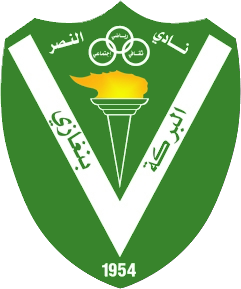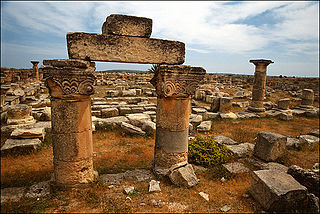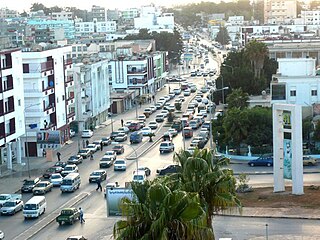
There are twenty-two districts of Libya, known by the term shabiyah. In the 1990s these replaced the older baladiyat system.

Tripolitania is a historic region and former province of Libya.
Maghrebi Arabic is an Arabic dialect continuum spoken in the Maghreb region, in Morocco, Algeria, Tunisia, Libya, Western Sahara, and Mauritania. It includes Moroccan, Algerian, Tunisian, Libyan, and Hassaniya Arabic. Speakers of Maghrebi Arabic call their language Derja, Derija or Darija. This serves to differentiate the spoken vernacular from Modern Standard Arabic. As the Maltese language is believed to have been immediately derived from Siculo-Arabic and ultimately from Tunisian Arabic, it contains some typical Maghrebi Arabic areal characteristics.

Libyan Arabic is a variety of Arabic spoken in Libya and neighboring countries. It can be divided into two major dialect areas; the eastern centred in Benghazi and Bayda, and the western centred in Tripoli and Misurata. The eastern variety extends beyond the borders to the east into western Egypt. A distinctive southern variety, centered on Sabha, also exists and is more akin to the western variety.
The Central Bank of Libya (CBL) is the monetary authority in Libya. It has the status of an autonomous corporate body. The law establishing the CBL stipulates that the objectives of the central bank shall be to maintain monetary stability in Libya and to promote the sustained growth of the economy in accordance with the general economic policy of the state.
Shabiyah is an administrative division of Libya. It is often translated as popularate, but also as "municipality" or "district".

The Libyan Football Federation (LFF) is the governing body of football in Libya. It was founded in 1962, affiliated to FIFA in 1964 and to CAF in 1965. It organizes the national football league and the national team.

The Latin name Libya referred to the region west of the Nile generally corresponding to the Atlantic Mountains according to Diodorus. Its people were ancestors of the modern Libyan. They occupied the area for thousands of years before the beginning of human records in ancient Egypt. Climate changes affected the locations of the settlements.

Al-Nasr Sports, Cultural, and Social Club is a Libyan football club based in Benghazi, Libya.
The Libyan Premier League(Arabic: الدوري الليبي الممتاز) is the men's top professional football division of the Libyan football league system. Administered by the Competition Organizing Committee in the Libyan Football Federation, Libyan Premier League is contested by 24 teams divided into two groups of 12, with the two lowest-placed teams of each group relegated to the First Division.
Libyan Premier League 2006\2007 was the 39th edition of The Libyan Premier League, the highest division of Libyan football championship, organised by Libyan Football Federation.
Kouloughlis, also spelled Koulouglis, Cologhlis and Qulaughlis was a term used during the Ottoman period to designate the mixed offspring of Turkish men and local North African women, situated in the western and central coastal regions in the Barbary coast. Whilst the terminology was commonly used in Ottoman Algeria, Ottoman Libya, and Ottoman Tunisia, it was not used in Ottoman Egypt to refer to Turco-Egyptians. Today, the descendants of the Kouloughlis have largely integrated into their local societies after independence, however, they still maintain some of their cultural traditions ; they also continue to practice the Hanafi school of Islam, and uphold their Turkish origin surnames.
Judeo-Tripolitanian Arabic is a variety of Arabic spoken by Jews formerly living in Libya. Judeo-Tripolitanian Arabic differs from standard Libyan Arabic in that it closely resembles the original dialect of the sedentary population, whereas much of Libya's population now speaks Bedouin-influenced varieties of Arabic. A reference grammar is available.
Al-Ittihad Sport, Cultural & Social Club known as Teha is the most successful team in the history of Libya. Al Itihad is a Libyan football club based in Bab Ben Gashier, Tripoli, Libya. They have won the Libyan Premier League 16 times, the Libyan Cup 7 times and the Libyan SuperCup 10 times.
The Libyan Civil Aviation Authority is the civil aviation authority of Libya. Its head office is at Tripoli International Airport in Tripoli.

The Arab League has 22 member states. It was founded in Cairo in March 1945 with six members: the Kingdom of Egypt, Kingdom of Iraq, Lebanon, Saudi Arabia, Syrian Republic, and Transjordan. North Yemen joined on 5 May 1945. Membership increased during the second half of the 20th century. Five countries have observer status.

The official language of Libya is Modern Standard Arabic. Most residents speak one of the varieties of Arabic as a first language, most prominently Libyan Arabic, but also Egyptian Arabic and Tunisian Arabic.
The Baladiyah (singular), or baladiyat (plural), is the current second-level administration subdivision of Libya being reintroduced in 2012 by the General National Congress with Law 59 on the system of local administration, dividing the country into governorates (muhafazat) and districts (baladiyat), with baladiyah having local councils.
Libyan Canadians are Canadians of Libyan descent or Libyans who have Canadian citizenship.











